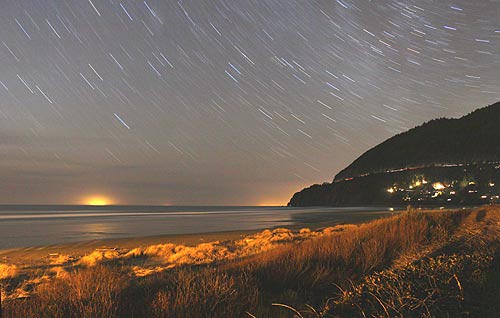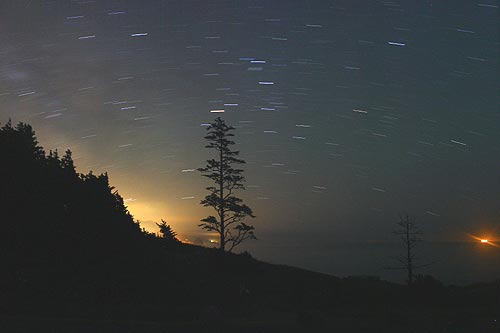 |
Oregon Astronomy Watch: Record-Setting Asteroid Flyby Next Week
Published 02/07/2013

(Manzanita, Oregon) – Unfortunately, this rather ominous but impressive near-miss of an asteroid passing very close to the Earth will be missed by those in Oregon, its coast and indeed those in California, Washington and western Canada. Still, it's a record-setting flyby of this 165-foot-wide chunk of space debris that will be sure to wow those watching the live video feed (http://events.slooh.com/).
Jim Todd, planetarium manager of Portland's OMSI, said the asteroid designated as 2012 DA14 will zoom past Earth at a close 17,200 miles on February 15.
“There is no danger of a collision,” Todd said. “Instead, this flyby presents a unique scientific opportunity for astronomers worldwide to observe the asteroid. The space rock is about 165 feet wide which is approximately the size of OMSI's submarine, the USS Blueback. At the time of the flyby, the asteroid will be traveling at 17,450 miles per hour; in other words, 4.8 miles per second relative to Earth.”
Todd said this is the closest predicted flyby of any large object so far, since NASA started tracking such objects in the 90's.

Cannon Beach
Parts of Europe, Africa and Asia will get to see the flyby, but here in Oregon and the Oregon coast, we're stuck with the video feed because it will be too low on the horizon and it will be daytime when it swings past our planet's skies.
Even in those areas, you'd need a good telescope or a great pair of binoculars.
“DA14 is very small, and its apparent magnitude to peak at about only 7.4, too dim to be viewed by the naked eye,” Todd said.
A press release from NASA details other facts about 2012 DA14, including that it will pass so close that will meander inside the ring of geosynchronous weather and communications satellites. NASA's Near-Earth Object Program Office can accurately pinpoint the asteroid's path, and the space agency stresses it is not on a collision course with Earth.
For more information about 2012 DA14 and other asteroids of interest, visit NASA’s Near-Earth Object Program web site: http://neo.jpl.nasa.gov and VIDEO: http://www.youtube.com/watch?v=GwidzVHvbGI.
More about Oregon Coast Science or keep scrolling below:

Manzanita

Cape Foulweather at night, near Depoe Bay

Yachats at night
More About Oregon Coast hotels, lodging.....
More About Oregon Coast Restaurants, Dining.....
 |
 |
 |
LATEST OREGON COAST NEWS STORIES
Dark Sky Week is Prime Along Oregon Coast: Where and Where Not to Go |
Back to Oregon Coast
Contact Advertise on BeachConnection.net
All Content, unless otherwise attributed, copyright BeachConnection.net Unauthorized use or publication is not permitted
Secrets of the Season |
Unusual Travel Articles TravelParanormal.com allows you to submit your own creepy tale or debunk one - or see up-to-the-minute news headlines about travel and the paranormal. News Headlines from All Over Oregon Need to scan Oregon headlines? Constantly updated news from all over Oregon: a comprehensive, up-to-the-minute display of news headlines from a variety of media |





































